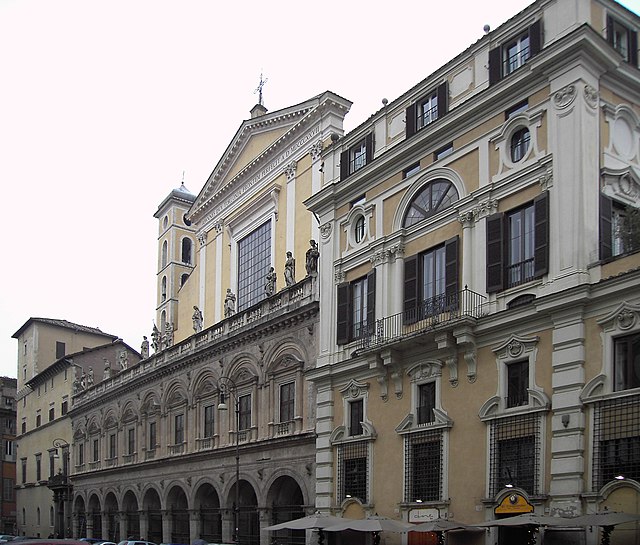The House of Colonna, also known as Sciarrillo or Sciarra, is an Italian noble family, forming part of the papal nobility. It was powerful in medieval and Renaissance Rome, supplying one pope and many other church and political leaders. The family is notable for its bitter feud with the Orsini family over influence in Rome, until it was stopped by papal bull in 1511. In 1571, the heads of both families married nieces of Pope Sixtus V. Thereafter, historians recorded that "no peace had been concluded between the princes of Christendom, in which they had not been included by name".
Palazzo Colonna in Rome (begun by Pope Martin V, to this day residence of the family)
Oddo Colonna (1368–1431), Pope Martin V 1417-1431
Prospero Colonna (1452–1523), papal condottiere
The Renaissance in Rome occupied a period from the mid-15th to the mid-16th centuries, a period which spawned such masters as Michelangelo and Raphael, who left an indelible mark on Western figurative art. The city had been a magnet for artists wishing to study its classical ruins since the early 15th century. A revived interest in the Classics brought about the first archaeological study of Roman remains by the architect Filippo Brunelleschi and the sculptor Donatello. This inspired a corresponding classicism in painting and sculpture, which manifested itself in the paintings of Masaccio and Uccello. Pisanello and his assistants also frequently took inspiration from ancient remains, but their approach was essentially cataloguing, acquiring a repertoire of models to be exploited later.
Idealized depiction of Rome from the 1493 Nuremberg Chronicle
The head of a princess attributed in a cycle of Archbasilica of Saint John Lateran of Pisanello e Gentile, Museo di palazzo Venezia, Rome.
Martyrdom of Saint Peter, Filarete bronze door for the Old St. Peter's Basilica in Rome
Palazzo Venezia, the courtyard of the Palazzetto







